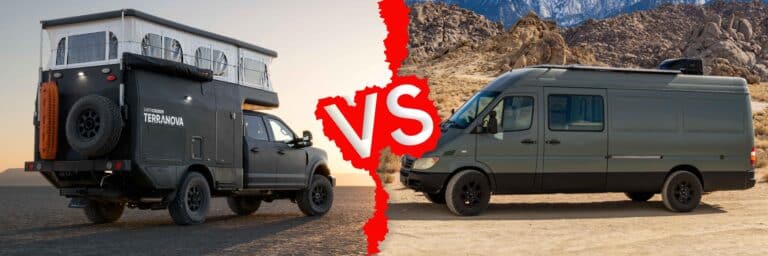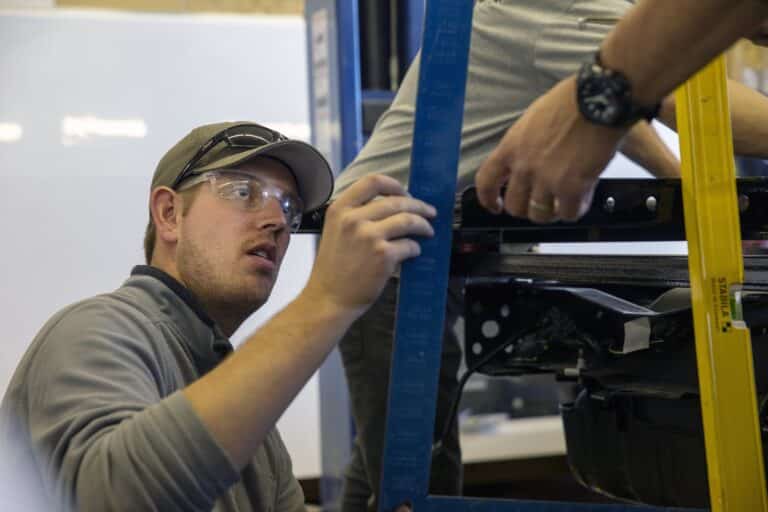Cold weather camping isn’t for everyone; there are many who tolerate it begrudgingly, or flat out refuse to consider going at all.
Then there are the dedicated adventurers who can’t bear a winter without the tranquility only a campfire under the stars can provide. They look forward to the crisp air, seclusion, and the apprehensive thrill that accompanies driving on a snowy forest service road you hope is passable.
Along with invigoration, cold weather camping provides challenges that prevent many from venturing out this time of year. Although bugs and overcrowded lakes are unlikely to cause frustration, temperatures below freezing can lead to more than a night of restless, shivering sleep if you are unprepared. Don’t let an unseasonably warm day fool you, unpredictable weather means often waking up to vastly different conditions that you fell asleep to.
Here at EarthCruiser, we take pride in our ability to enjoy the wilderness year-round. By enjoy, I mean warming up quickly, sleeping well, and waking up confident that we still have liquid water and a vehicle that starts. Buying an EarthCruiser is the most efficient path to off the grid comfort in the winter, but we still have some tips that will help you embrace 4 season overlanding, whatever you choose to sleep in.
Let’s take a look at the essentials- water, heat, and power. For a guide to preparing your vehicle for a winter wonderland, I recommend this great blog from our friends at Crankshaft Culture.
Water.
It is, quite literally, vital that you protect your fresh water supply from freezing. Ideally, your water tank is located within the insulated or heated area of your camper. We’ve gone a step further and engineered an air circulation system, moving warm air around the batteries and water tanks whenever the heater is in use.
If you can’t locate your water storage in a heated area, your next best bet is to use an electric tank heat pad and insulate the outside of the tank. An electric tank heat pad is a safe way to keep your water from freezing but will also consume a lot power. A normal DC heater pad pulls around 120 watts of power, and without the replenishing power from solar you need to consider a larger battery bank to keep it running throughout the night. You also want to consider heating the lines going to and from this tank.
If you aren’t able to utilize these methods, you can store your water within the insulated walls of a good old-fashioned cooler. Before bed, fill a plastic bottle with boiling water and place it inside with your portable water containers. Not sophisticated, but effective.
Regardless of your method, keep a large, full, vacuum sealed water bottle on hand in case of emergencies. I use a large 64oz Hydro-flask bottle which has prevented water from freezing up even on nights below zero in a tent. It won’t hold enough water to live for days, but something to make a cup of coffee with until you can figure out how to get your tanks defrosted.
Heat.
After a day of playing outside, nothing’s better than warming up out of the elements. Naturally, you want your camper heated to comfort quickly and efficiently. Many feel that increasing the R-value in your camper is the most important insulating factor, but it’s more complicated than that.
Although R-Value, thermal resistance, is an important factor in attaining and maintaining a comfortable interior, it doesn’t account for the heat lost to seats, cabinets, windows or other interior amenities. Each of the surfaces in your camper must be heated right along with the air. Wood, cushions, and windows in particular will slow your heating time significantly, so be wary of excessive build-ins. Thankfully EarthCruiser vehicles are designed to mitigate as many areas of heat conduction and loss as possible.

Because you want your camper to optimize interior space without being bulky and overweight, bigger R-value isn’t always better. Having an efficient heating system may be even more important than the R-value. Most RVs use notoriously inefficient propane systems, which create excessive condensation, with tanks that are susceptible to freezing, as they must be kept outside for venting. Electric heaters are effective, but require large battery banks or a generator to run. Petrol and diesel fuel are more energy dense than propane, proving more heat for the same amount of fuel. Petrol and diesel heaters are small in footprint, but put out some impressive BTUs. Since switching to a gasoline (petrol) fueled chassis, we’ve switched to the Webasto Airtop EVO 40. Not only does this tiny unit create over 13,000 BTUs, but it can run over 20 hours on a single gallon of fuel.
Power.
Electricity has become a necessity in our everyday lives. Our personal electronics, cameras, laptops, coffee makers and so on need power to operate. This is why power generation (solar), and power storage (batteries) are important systems to think about keeping happy when cold weather camping.
Generation: There are many campers that charge their batteries using fuel powered generators. Generators are bulky, take up space, require fuel, and most of all are noisy. Most campers have already found that solar is the better way to generate energy, so for this conversation we are going to specifically speak to using solar panels.
Not all solar panels are created equally, and you have to make sure you select the right tool for the job. In the winter you have shorter days due to the earth being tilted on its axis. This means that you receive less “direct” sunlight in the winter than enjoyed during summer months. A misunderstanding many have is that the wattage advertised for most solar panels is what these panels generate all day long. . In reality the advertised wattage is during direct sun conditions only. The amount of power the panel generates during indirect sun conditions,or what you most commonly experience while cold weather camping, can sometimes drop to 10% of their peak wattage.

Our partners at Sunflare design flexible panels using CIGS technology. This technology optimizes the performance of solar power generation during indirect sunlight conditions. Our testing proved that over the course of a day these panels were more efficient overall then their peak power touting competitors. We quickly found out that more isn’t always better.
Storage: Two main battery types common in most campers are AGM and Lithium. AGM are reliable in most all conditions, but don’t allow you to access much of the power stored inside. Lithium batteries are light and can store large amounts of usable energy (almost 2 times more than a similar sized AGM). What lithium batteries don’t like is being cold, which becomes a problem when cold weather camping. Similar to solar panels, not all lithium batteries are created equal, and there are a few very important options to consider.
One of the most damaging things to lithium battery longevity is trying to charge them when they are too cold (under 35 degrees F). When the battery is below 35 degrees F the ions don’t enter the graphite where they are stored under normal conditions. Instead, they exit the solution and plate across the surface of the graphite as solid lithium. This process can wreck the performance and life of a lithium battery. Again, you can always keep your batteries in a warm place (similar to our heated battery box in some EarthCruiser vehicles), but there are two things manufacturers offer that you should know about to prevent this issue.
A Battery management system (BMS) is the brain of a lithium battery and protect it against many things, including cold weather. A cold weather shut off function is a feature that does not allow the lithium battery to charge if it is below the threshold temperature.

The other protection system manufactures use is an integrated warming system. This system consists of a wired silicon pad between the lithium cells. When the BMS recognizes the batteries are getting too cold, it turns this warming pad on to heat the battery back to a safe state (about 45 degrees F) before shutting off. This system provides excellent protection against the cold, but your batteries will eventually deplete over time if they are not being recharged.
Hopefully these tips were helpful. Most importantly if you do decide to cold weather camp, be prepared with warm clothes and the right recovery gear to get you back to safety if something does go wrong. The winter can be a wonderful place if you are properly prepared.











